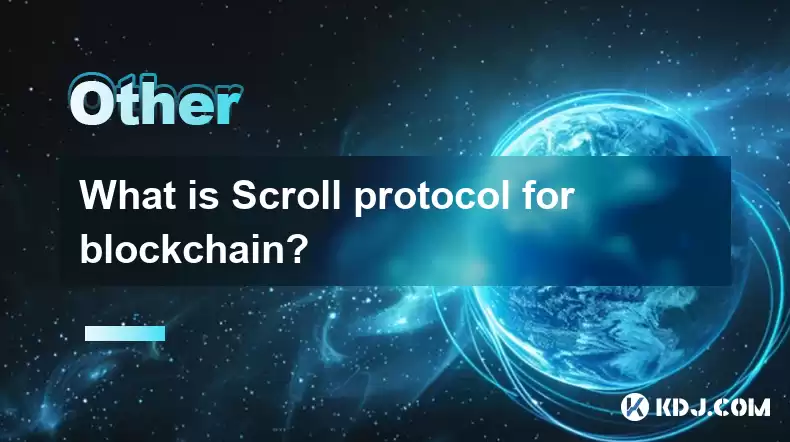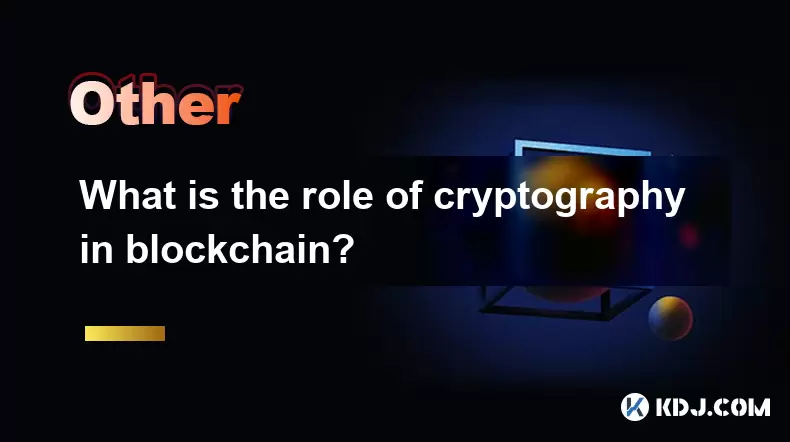-
 Bitcoin
Bitcoin $113900
0.47% -
 Ethereum
Ethereum $3491
-0.42% -
 XRP
XRP $2.876
-1.87% -
 Tether USDt
Tether USDt $1.000
0.03% -
 BNB
BNB $750.4
-0.49% -
 Solana
Solana $161.3
-1.76% -
 USDC
USDC $0.9999
0.01% -
 TRON
TRON $0.3242
-0.91% -
 Dogecoin
Dogecoin $0.1985
-0.19% -
 Cardano
Cardano $0.7241
1.49% -
 Hyperliquid
Hyperliquid $38.05
0.56% -
 Stellar
Stellar $0.3896
2.92% -
 Sui
Sui $3.442
0.61% -
 Chainlink
Chainlink $16.18
0.92% -
 Bitcoin Cash
Bitcoin Cash $541.0
0.51% -
 Hedera
Hedera $0.2427
2.67% -
 Ethena USDe
Ethena USDe $1.001
0.03% -
 Avalanche
Avalanche $21.39
-0.68% -
 Toncoin
Toncoin $3.669
2.25% -
 Litecoin
Litecoin $109.5
0.95% -
 UNUS SED LEO
UNUS SED LEO $8.966
0.11% -
 Shiba Inu
Shiba Inu $0.00001218
0.77% -
 Polkadot
Polkadot $3.598
1.23% -
 Uniswap
Uniswap $9.164
1.14% -
 Monero
Monero $297.7
1.21% -
 Dai
Dai $1.000
0.00% -
 Bitget Token
Bitget Token $4.328
0.84% -
 Pepe
Pepe $0.00001047
1.05% -
 Cronos
Cronos $0.1329
0.70% -
 Aave
Aave $257.6
1.03%
What is Scroll protocol for blockchain?
Scroll, an Ethereum Layer 2 solution, uses ZK-rollups to boost transaction efficiency and scalability, reducing costs and congestion on the Ethereum network.
Apr 13, 2025 at 10:56 pm

The Scroll protocol represents a significant advancement in the realm of blockchain technology, particularly in the Ethereum ecosystem. Scroll is an Ethereum Layer 2 scaling solution that aims to enhance the efficiency and scalability of transactions on the Ethereum network. By utilizing zero-knowledge rollups (ZK-rollups), Scroll enables faster and cheaper transactions, thereby reducing the congestion typically experienced on the Ethereum mainnet.
How Scroll Protocol Works
At its core, Scroll leverages ZK-rollups to bundle multiple transactions into a single transaction that is then processed off-chain. This method significantly reduces the load on the Ethereum network, allowing for higher throughput and lower transaction fees. The process involves the following key steps:
- Transaction Aggregation: Users submit their transactions to the Scroll network, where they are aggregated into batches.
- Off-Chain Processing: These batches are processed off-chain, using the computational power of the Scroll network.
- Proof Generation: Once the transactions are processed, Scroll generates a zero-knowledge proof, which is a cryptographic method that verifies the validity of the transactions without revealing any sensitive information.
- On-Chain Settlement: The proof is then submitted to the Ethereum mainnet, where it is verified and settled, ensuring the security and finality of the transactions.
Benefits of Using Scroll Protocol
The Scroll protocol offers several advantages over traditional on-chain transactions on the Ethereum network. Firstly, it significantly reduces gas fees, making transactions more affordable for users. Secondly, it increases the transaction throughput, allowing the Ethereum network to handle more transactions per second. Thirdly, by processing transactions off-chain, Scroll enhances the overall user experience by reducing transaction times.
Scroll's Role in Decentralized Finance (DeFi)
In the world of decentralized finance (DeFi), Scroll plays a crucial role in improving the efficiency of transactions. DeFi platforms often struggle with high gas fees and slow transaction times, which can deter users and hinder the growth of the ecosystem. By integrating Scroll, DeFi applications can offer users a more seamless and cost-effective experience. For instance, a user can execute a complex DeFi transaction, such as a token swap or a liquidity provision, at a fraction of the cost and time compared to traditional on-chain methods.
Technical Implementation of Scroll Protocol
The technical implementation of Scroll involves several components that work together to ensure the smooth operation of the protocol. The Scroll network consists of a network of nodes that process transactions and generate proofs. The Scroll smart contract on the Ethereum mainnet is responsible for verifying these proofs and settling transactions. Additionally, Scroll employs a bridge that allows users to move assets between the Ethereum mainnet and the Scroll network seamlessly.
Security and Privacy Considerations
Security and privacy are paramount in the blockchain space, and Scroll addresses these concerns through its use of zero-knowledge proofs. These proofs ensure that transaction data remains private while still being verifiable by the Ethereum network. This approach not only enhances privacy but also adds an additional layer of security, as the validity of transactions is cryptographically proven without exposing sensitive information.
Integration with Ethereum Ecosystem
Scroll is designed to be fully compatible with the Ethereum ecosystem, ensuring that users can seamlessly interact with existing Ethereum applications and smart contracts. This compatibility is achieved through EVM (Ethereum Virtual Machine) equivalence, which means that Scroll can run any Ethereum smart contract without modifications. This feature is crucial for developers and users who want to leverage the benefits of Scroll without disrupting their existing workflows.
Use Cases of Scroll Protocol
The Scroll protocol has a wide range of potential use cases within the cryptocurrency ecosystem. One prominent use case is in the gaming industry, where fast and cheap transactions are essential for a smooth user experience. By using Scroll, gaming platforms can process in-game transactions quickly and at a lower cost, enhancing the overall gaming experience. Another use case is in the realm of NFTs (Non-Fungible Tokens), where Scroll can facilitate the efficient trading and transfer of digital assets. Additionally, Scroll can be used in cross-border payments, enabling faster and more cost-effective remittances.
Frequently Asked Questions
Q: How does Scroll compare to other Layer 2 scaling solutions like Optimism and Arbitrum?
A: Scroll, Optimism, and Arbitrum are all Ethereum Layer 2 scaling solutions, but they differ in their approaches. Scroll uses zero-knowledge rollups, which provide enhanced privacy and security through cryptographic proofs. Optimism and Arbitrum, on the other hand, use optimistic rollups, which rely on fraud proofs and have a different trade-off between security and speed. Scroll's focus on ZK-rollups makes it particularly appealing for users who prioritize privacy and security.
Q: Can existing Ethereum smart contracts be used on the Scroll network without modifications?
A: Yes, Scroll is designed to be EVM-equivalent, meaning that existing Ethereum smart contracts can be deployed and run on the Scroll network without any modifications. This feature ensures a seamless transition for developers and users who want to leverage the benefits of Scroll while continuing to use their existing smart contracts.
Q: What are the potential risks associated with using Scroll protocol?
A: While Scroll offers numerous benefits, there are some potential risks to consider. One risk is the reliance on the security of the zero-knowledge proofs, which, if compromised, could affect the integrity of the transactions. Another risk is the centralization of the Scroll network, as the nodes processing transactions could potentially become a single point of failure. However, Scroll's design and ongoing development aim to mitigate these risks through robust security measures and decentralization efforts.
Q: How can users start using Scroll protocol for their transactions?
A: To start using Scroll for transactions, users need to follow these steps:
- Install a Compatible Wallet: Use a wallet that supports Scroll, such as MetaMask, and connect it to the Scroll network.
- Bridge Assets: Transfer assets from the Ethereum mainnet to the Scroll network using the Scroll bridge. This involves selecting the asset, specifying the amount, and confirming the transaction.
- Interact with Scroll Applications: Use Scroll-compatible dApps (decentralized applications) to perform transactions. These dApps will handle the off-chain processing and proof generation automatically.
- Monitor Transactions: Keep track of your transactions on the Scroll network and ensure they are settled on the Ethereum mainnet.
Disclaimer:info@kdj.com
The information provided is not trading advice. kdj.com does not assume any responsibility for any investments made based on the information provided in this article. Cryptocurrencies are highly volatile and it is highly recommended that you invest with caution after thorough research!
If you believe that the content used on this website infringes your copyright, please contact us immediately (info@kdj.com) and we will delete it promptly.
- Altcoins Most Searched: Hedera (HBAR) and the ETF Hype
- 2025-08-03 20:50:16
- Arbitrage Adventures: Creditcoin, Kaspa, and Chasing Crypto Profits
- 2025-08-03 20:30:16
- Claude HIVE & Code Agents: Faster Coding Revolution?
- 2025-08-03 20:50:16
- Trump Media, Bitcoin, and Crypto: A Surprising Alliance in the Making?
- 2025-08-03 21:30:16
- Shiba Inu's Bullish Reversal Hopes Amid Market Uncertainty: A Deep Dive
- 2025-08-03 21:30:16
- Shiba Inu's Struggle, Mutuum Finance's Rise, and Key Support Levels: A Crypto Deep Dive
- 2025-08-03 20:55:16
Related knowledge

What is the difference between on-chain and off-chain transactions?
Aug 02,2025 at 04:22pm
Understanding On-Chain TransactionsOn-chain transactions refer to digital asset transfers that are recorded directly on a blockchain ledger. These tra...

What is a node's role in a blockchain network?
Aug 03,2025 at 03:16pm
Understanding the Function of a Node in a Blockchain NetworkA node is a fundamental component of any blockchain network, acting as a participant that ...

What is the double-spending problem and how does blockchain prevent it?
Aug 02,2025 at 01:07pm
Understanding the Double-Spending ProblemThe double-spending problem is a fundamental challenge in digital currency systems where the same digital tok...

What is the difference between a blockchain and a database?
Aug 01,2025 at 09:36pm
Understanding the Core Structure of a BlockchainA blockchain is a decentralized digital ledger that records data in a series of immutable blocks linke...

How does blockchain handle scalability?
Aug 02,2025 at 02:58pm
Understanding Blockchain Scalability ChallengesBlockchain scalability refers to a network's ability to handle an increasing volume of transactions wit...

What is the role of cryptography in blockchain?
Aug 03,2025 at 03:42pm
Understanding the Foundation of Blockchain SecurityCryptography is the cornerstone of blockchain technology, providing the essential tools to ensure d...

What is the difference between on-chain and off-chain transactions?
Aug 02,2025 at 04:22pm
Understanding On-Chain TransactionsOn-chain transactions refer to digital asset transfers that are recorded directly on a blockchain ledger. These tra...

What is a node's role in a blockchain network?
Aug 03,2025 at 03:16pm
Understanding the Function of a Node in a Blockchain NetworkA node is a fundamental component of any blockchain network, acting as a participant that ...

What is the double-spending problem and how does blockchain prevent it?
Aug 02,2025 at 01:07pm
Understanding the Double-Spending ProblemThe double-spending problem is a fundamental challenge in digital currency systems where the same digital tok...

What is the difference between a blockchain and a database?
Aug 01,2025 at 09:36pm
Understanding the Core Structure of a BlockchainA blockchain is a decentralized digital ledger that records data in a series of immutable blocks linke...

How does blockchain handle scalability?
Aug 02,2025 at 02:58pm
Understanding Blockchain Scalability ChallengesBlockchain scalability refers to a network's ability to handle an increasing volume of transactions wit...

What is the role of cryptography in blockchain?
Aug 03,2025 at 03:42pm
Understanding the Foundation of Blockchain SecurityCryptography is the cornerstone of blockchain technology, providing the essential tools to ensure d...
See all articles

























































































